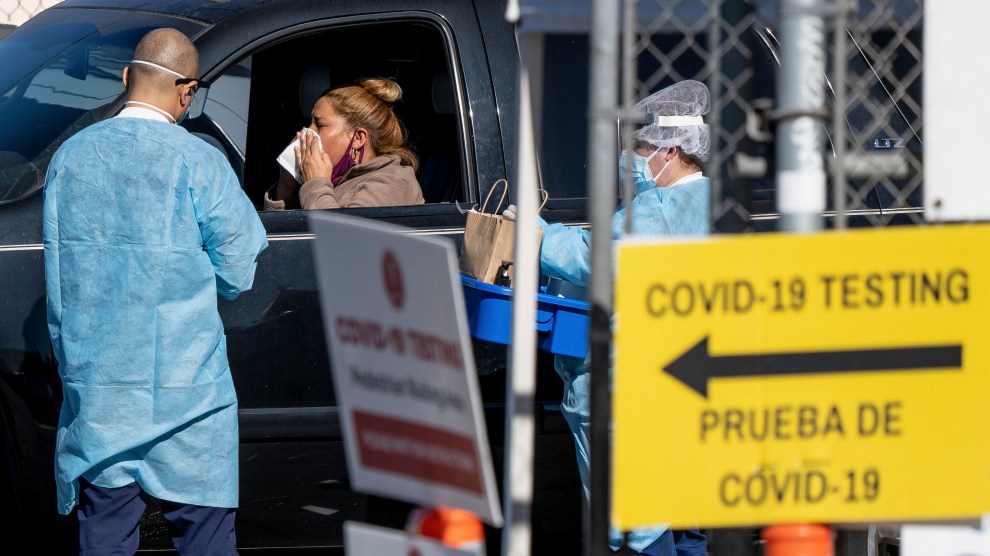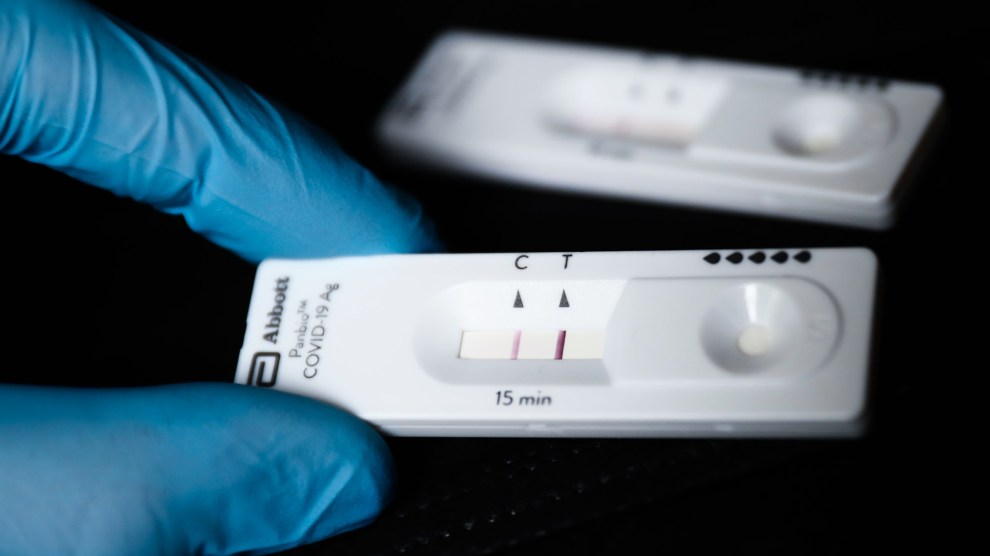
Justin L. Stewart/Zuma
The Biden administration announced a new set of measures Tuesday for tackling the Omicron variant, which has rapidly become the most dominant coronavirus variant in the United States.
President Biden’s plan involves setting up new federal testing sites, sending 1,000 military medical professionals to overburdened hospitals, and buying and distributing 500 million free rapid tests to the public. The new plan is a significant step up from the actions that the Biden administration announced it would take to combat the coronavirus three weeks ago. That plan promised that private insurers would reimburse consumers for the cost of rapid at-home COVID tests—starting January 15.
Earlier this month, Press Secretary Jen Psaki drew criticism when she asked at a press conference, “Should we just send [a test] to every American?” Now, it appears that that’s exactly what the Biden administration is poised to do. But not until after the holidays—the 500 million tests will not be available until January. Many major cities are seeing long lines at COVID testing sites, days-long waits for PCR test results, and a shortage of at-home rapid tests.
At a press conference this afternoon, Biden acknowledged that the Omicron variant increases the risk of breakthrough infections, but also stressed the importance of vaccinations and booster shots to reduce the severity of any potential illness. “A case of COVID-19 for a fully vaccinated and boosted person will most likely mean no symptoms or mild ones similar to the common respiratory viruses,” he said. “Over 200 million Americans share the peace of mind that they did not have in March 2020. They’re protected from hospitalization and are protected from death.”
This article has been updated with details from Biden’s afternoon press conference.













